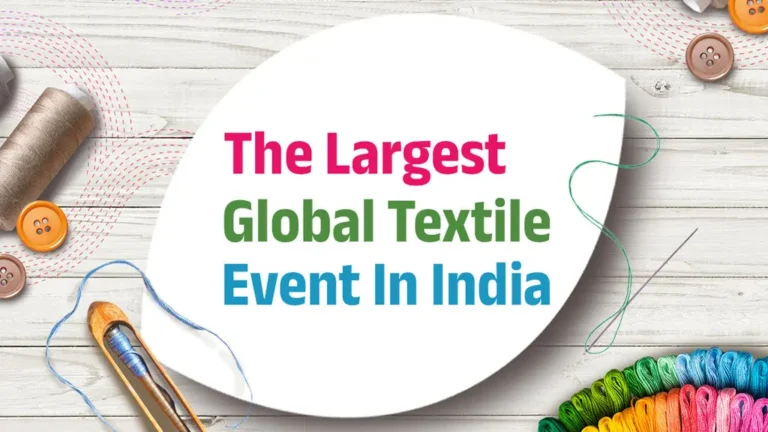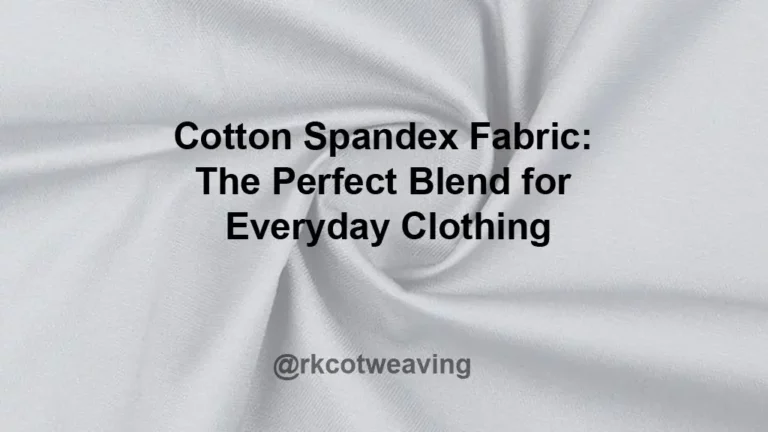Indian Textile Industry with Sustainable Development Goals

India is one of the world’s largest textile producers and exporters. In 2020-21, India’s domestic textile market was valued at $ 120 billion, with rising exports valued at $ 50 billion. The Indian government gives the textile industry the tools it needs to compete globally, attract significant investment, and create jobs. Textiles have evolved from being a necessity to a fashion statement, generating enormous profits for companies in India and around the world.
However, these vibrant, eccentric outfits have a dark side because their colours have severe negative effects on the surrounding environment. Textile processing generates a significant amount of effluent, which puts a strain on the environment. Textile handling poses a significant chemical challenge. It makes use of plentiful, ecologically sparse, non-biodegradable compounds. Textile industries handle materials with a variety of colours, synthetic blends, and helper synthetics. According to World Bank estimates, coloring and finishing patterns are responsible for 17% to 20% of all current water pollution. Nearly 72 different toxic synthetics are said to be present in water only for coloring patterns.
The industry is a two-edged sword, requiring a high level of monitoring and compliance with guidelines to mitigate its negative environmental impacts. The goal of incorporating sustainability into the textile industry is to create thriving ecosystems and alliances by doing things like increasing the value of local produce and products, reducing waste, and reducing the environmental harm caused by production and consumption.
Leading players in India have made significant strides toward incorporating sustainability into the textile manufacturing value chain. Many people prefer input management to tailpipe management as a preferred strategy for sustainability. Cotton is regarded as an important ally by the industry. They are expanding their sustainable cotton portfolio by creating a sustainable ecosystem from farm to fabric by implementing the Regenerative Organic Farming practice. They are securing long-term allies in sustainable manufacturing energy, its suppliers, and regulators. In addition to solar rooftops, they are partnering with biomass supply to green their power mix.
Some businesses are incorporating sustainability and circularity into all aspects of their profit chain, including raw material sourcing, production, supply chain, and waste recycling. They are focusing on pre- and post-consumer waste as they transition from linear to circular operations. They are committing to plastic recycling for packaging by substituting recycled LDPE for virgin polyester. They are also reducing plastic consumption by recycling factory trash and utilizing textile scrap.
The sector’s sustainability strategy revolves around three E’s: Equity, Environment, and Economics. They are committed to preserving and enhancing the natural environment by reintroducing more nature into all business fields. The industry is also seeing the development of eco-friendly textiles that convert waste into fiber. This method reduces the loss of critical resources. Using waste PET bottles that would otherwise have been incinerated or discharged into landfills or the oceans, discarded PET bottles are turned into flakes that are finely turned into a thread in several deniers and cut for spinning into yarn. These recycled 100% polyester fibers perform similarly to virgin polyester fiber.
The Indian government is undertaking a number of initiatives and actions to improve the textile industry. One of the primary initiatives of the Ministry of Textiles is the establishment of Mega Investment Textile Parks (MITRA). This scheme will construct a world-class infrastructure with plug-and-play facilities to enable global export champions. This project will make India a destination for national and international textile and apparel entrepreneurs. Over the next three years, the government plans to build seven textile parks. The newly launched Production Linked Incentive (PLI) scheme aims to boost Indian technical textile production and exports. It aspires to capture a sizable share of the market and make India the leading exporter of technical textiles. Under the automatic route, India has approved 100% FDI in the Indian textiles sector. According to the automatic route, the non-resident investor or Indian corporation does not need permission from the Government of India for the investment, and 100% FDI is permitted in India. The industry has seen a surge in investment over the last five years as a result of the influx of FDI.
In 2019, the Ministry also launched Project SU.RE. – Sustainable Resolution. It represents India’s apparel industry’s commitment to establishing a sustainable path for the fashion industry. This project will assist the sector in meeting the Sustainable Development Goals (SDGs) as well as long-term environmental, social, and corporate governance objectives. The textile industry can contribute significantly to all of the SDGs, but it is best positioned to influence a few key functions. The following SDGs can have the most direct impact on the industry:
SDG 5: Achieve gender equality and empower women and girls
According to Deloitte, with more than 75% of global textile workers being women, promoting SDG5 is a top priority for the industry. Gender diversity benefits the manufacturing industry by fostering advanced innovation, a higher return on equity, and increased profitability.
SDG 6: Ensure universal access to and sustainable management of water and sanitation.
The textile industry must join forces with the food and energy industries in an integrated and collaborative cross-sector approach to address the growing clean water shortage. All participants in the textile value chain use innovative strategies to reduce water use, reuse water, and replenish resources, including agriculture, which consumes a large percentage of water in the textile life cycle.
SDG 7: Ensure that everyone has access to affordable, reliable, sustainable, and modern energy.
The textile industry has long recognized the need for clean energy solutions. They have kept the Paris Agreement and other initiatives going. Clean energy strategies have also been supported by businesses throughout their value chains.
SDG 8: Promote inclusive, long-term economic growth; full and productive employment; and decent work for all.
According to the World Bank, wages in this sector are below international standards. Nonetheless, textile workers earn more money than workers in other industries in the national market. As a result, for millions of poor, unskilled workers, textile manufacturing is a way out of poverty. Textile workers are mostly women, which is another important link in poverty alleviation. Expanding business opportunities for women is critical for poverty reduction and economic growth.
SDG 9: Resilient infrastructure, inclusive and sustainable industrialization, and innovation
By addressing consumption and production influence and exploring distinct business models, the fashion industry has recognised and advocated for innovation.
SDG 10: Reduced intra- and inter-country inequality
The industry can support this goal more effectively by implementing strategies and methods that ensure human rights are protected, fair wages are paid, and unfair practises are eliminated.
SDG 12: Responsible Consumption and Production – Ensure long-term consumption and production patterns.
Aside from resource and manufacturing efficiencies and more sustainable inputs like preferred fibres and materials, the industry is experimenting with more circular models with remarkable success. However, changing buyer behaviour will also be an important part of the solution to reducing consumption patterns.
SDG 15: Protect, restore, and promote sustainable use of terrestrial ecosystems; manage forests sustainably; combat desertification; and halt, reverse, and reverse land degradation and biodiversity loss.
Commitments to sourcing from sustainably managed forests and ecosystems have been refined into the forest or forest-derived materials policies of several brands.
The points highlighted by the SDGs have a direct impact on corporate profitability, sustainability, and risk environment. By implementing a cluster-based strategy, the industry can capitalise on key strengths and seize this exceptional opportunity.







